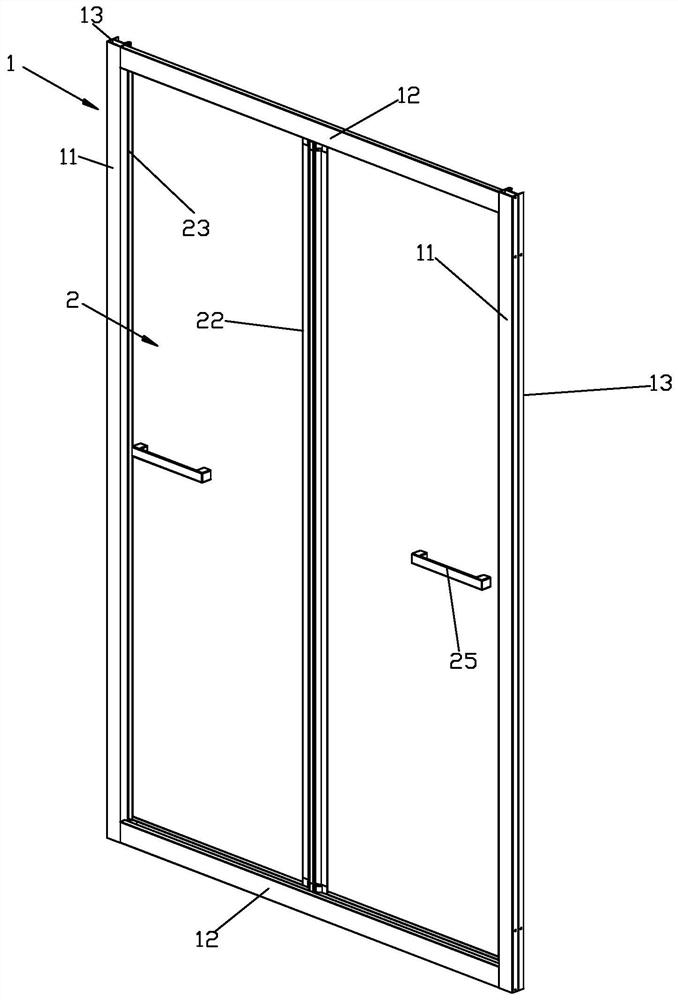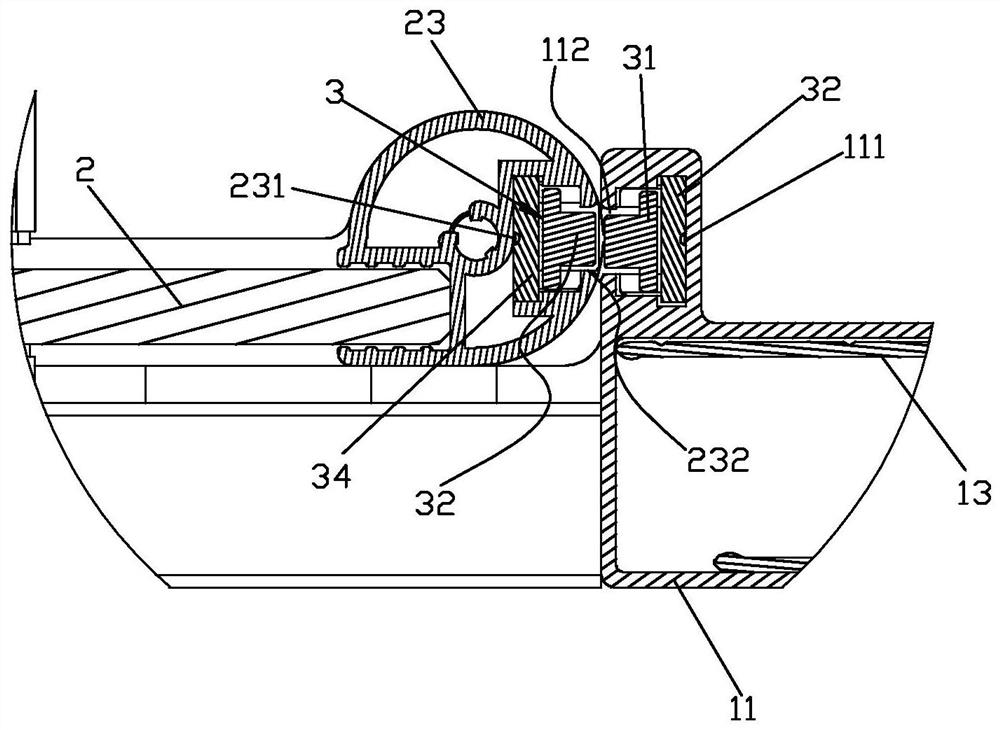Internal and external folding mechanism and connecting mechanism of movable panel
A technology of rotating connection mechanism and folding mechanism, which is applied in the direction of the arrangement of hinge plates, building components, and wing leaves, etc. It can solve the problems that the door frame cannot be moved relative to the door frame, and the two sides cannot be opened, so as to achieve convenient opening and cleaning. , The effect of improving the convenience of use
- Summary
- Abstract
- Description
- Claims
- Application Information
AI Technical Summary
Problems solved by technology
Method used
Image
Examples
Embodiment 1
[0057] Please check Figure 1 to Figure 13 , internal and external folding door, including a fixed frame 1 and two movable panels 2. Described fixed frame 1 comprises two fixed frames 11 arranged left and right and two guide rails 12 arranged up and down, described two fixed frames 11 and two guide rails 12 are relatively fixedly arranged, and described two fixed frames 11 and two guide rails 12 can be fixed as word-shaped structure. If described movable panel 2 is a room door, such as a bathroom door, described movable panel 2 has an inner side and an outer side, and the described inner side is the side close to two adjacent movable panels 2 when they are closed, and the described outer side is the adjacent side of two adjacent movable panels. 2 is far away from one side when it is closed; the specific structure is such as that the movable plate 2 includes a glass door, and the inner and outer sides of the glass door are respectively fixed with an inner moving frame 22 and a...
Embodiment 2
[0069] Please check Figure 14 to Figure 16 , it differs from Embodiment 1 in that: the first ferromagnetic part 31 and the first weak magnetic part 33 can be adsorbed together; There is a sliding space for the first strong magnetic part 31 to move inside and out, so that the first strong magnetic part 31 can move inside and outside relative to the fixed frame, and the first strong magnetic part 31 can move inside and outside relative to the first weak magnetic part 33 . The second ferromagnetic part 32 and the second weak magnetic part 34 can be adsorbed together; the second ferromagnetic part 32 is in a ladder or strip-like structure, and the second exterior groove has a sliding mechanism for the second ferromagnetic part 32 to move inside and outside. space, so that the second strong magnetic part 32 can move inside and outside relative to the fixed frame, and make the second strong magnetic part 32 move inside and outside relative to the second weak magnetic part 34.
[0...
Embodiment 3
[0072] Please check Figure 17 to Figure 19 , it differs from Embodiment 2 in that: the first weak magnetic member 33 is an S pole, and the N pole and S pole of the first ferromagnetic member 31 are arranged inside and outside, so that the N pole of the first ferromagnetic member 31 The poles are matched with the first weak magnetic part 33; the second weak magnetic part 34 is an N pole, and the S pole and N pole of the second strong magnetic part 32 are arranged along the inside and outside. The differences between the present embodiment and the first embodiment are as described above as required.
PUM
 Login to View More
Login to View More Abstract
Description
Claims
Application Information
 Login to View More
Login to View More - R&D
- Intellectual Property
- Life Sciences
- Materials
- Tech Scout
- Unparalleled Data Quality
- Higher Quality Content
- 60% Fewer Hallucinations
Browse by: Latest US Patents, China's latest patents, Technical Efficacy Thesaurus, Application Domain, Technology Topic, Popular Technical Reports.
© 2025 PatSnap. All rights reserved.Legal|Privacy policy|Modern Slavery Act Transparency Statement|Sitemap|About US| Contact US: help@patsnap.com



